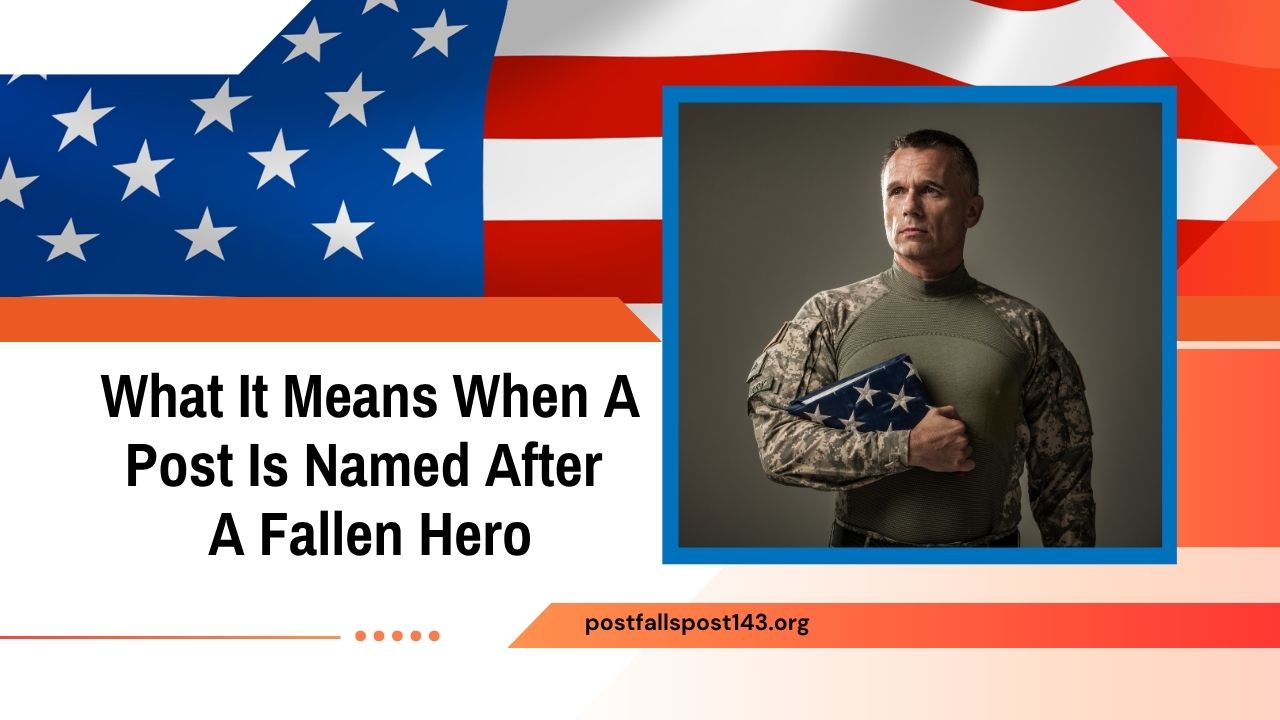Throughout history, the United States has named military posts, bases, and American Legion chapters after fallen heroes to preserve their sacrifice, valor, and patriotism.
These acts are not mere symbolic gestures—they hold deep meaning for military families, communities, and the country at large.
In this article, we explore the significance of naming a post after a fallen hero, how the selection process works, and what it means to those who serve and remember.
The Meaning Behind the Honor
When a military post or veterans’ organization is named after a fallen hero, it becomes a living memorial. The name represents the courage and sacrifice of an individual who gave their life in service to the nation.
These heroes may come from different military branches, wars, or operations, but what unites them is their selfless commitment to protect freedom and democracy.
Key Reasons for Naming Posts After Fallen Heroes:
- To honor their service and sacrifice permanently.
- To educate the public and future generations.
- To inspire service members and civilians alike.
- To keep alive the legacy and story of the hero.
Historical Significance of Named Posts
Many of the most well-known U.S. military installations were originally named in honor of military figures who were either killed in action or had profound contributions. For example:
| Post Name | Named After | Service | Conflict/Contribution |
|---|---|---|---|
| Fort Benning (now Fort Moore) | Lt. Gen. Hal Moore & Julia Moore | Vietnam War | Leadership & family support |
| Fort Hood (now Fort Cavazos) | Gen. Richard E. Cavazos | Korean & Vietnam Wars | First Hispanic 4-star general |
| Camp Pendleton | Maj. Gen. Joseph H. Pendleton | U.S. Marine Corps | Leadership in WWI & reforms |
| Post 143 (Example) | A local fallen hero from Post Falls, ID | American Legion | Honoring a community warrior |
These naming practices reflect deep institutional respect and a desire to memorialize heroism.
The Selection Process
The decision to name a post after a fallen hero usually follows a formal process involving:
- Community Nomination – Local residents, veteran groups, or military units may propose a name.
- Hero’s Legacy Evaluation – Their service record, valor, and community connection are reviewed.
- Approval by Authorities – Either a federal agency (for bases) or organizational boards (like American Legion) approve the naming.
- Dedication Ceremony – Often includes families, veterans, and officials.
This process ensures that the naming is meaningful, inclusive, and aligned with historical values.
The Emotional and Community Impact
For the families of fallen heroes, seeing their loved one’s name immortalized in a post provides solace, pride, and healing. It assures them that the sacrifice wasn’t forgotten.
In local communities, these posts become more than buildings—they turn into gathering places of remembrance and inspiration. They house veteran support services, host memorial events, and educate the public on military history and values.
Educational and Inspirational Role
Posts named after fallen heroes also serve an educational function. They often include:
- Plaques and exhibits detailing the hero’s service.
- Memorial services on key dates (Veterans Day, Memorial Day).
- Programs for youth, like ROTC partnerships or leadership seminars.
This fosters a culture of appreciation and ensures that future generations understand the cost of freedom.
Naming a post after a fallen hero is more than a tribute—it is a commitment to memory, a pillar of inspiration, and a beacon of service. It binds a community to its military roots and ensures that sacrifice is never forgotten.
As these names live on in plaques, parades, and everyday conversations, they remind us that behind every post lies a story of courage, honor, and ultimate sacrifice.
FAQs
Why are American Legion Posts often named after local fallen soldiers?
Because these posts are embedded in their communities, naming them after local heroes creates a deep personal connection and helps preserve regional military history.
Can families request to have a post named after their loved one?
Yes, families or community groups can initiate the process by submitting a proposal with detailed background, service records, and community support letters.
What happens during a dedication ceremony?
Dedication ceremonies often involve military honors, speeches, flag-raising, and remembrance activities attended by veterans, families, and public officials.

